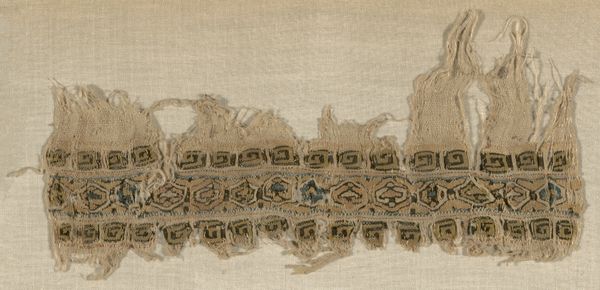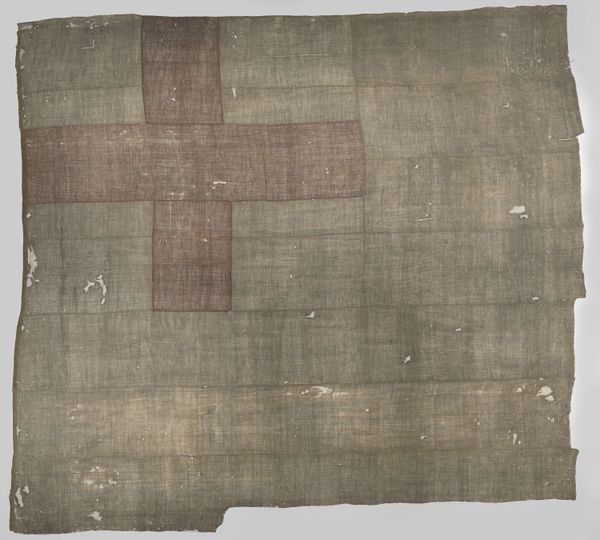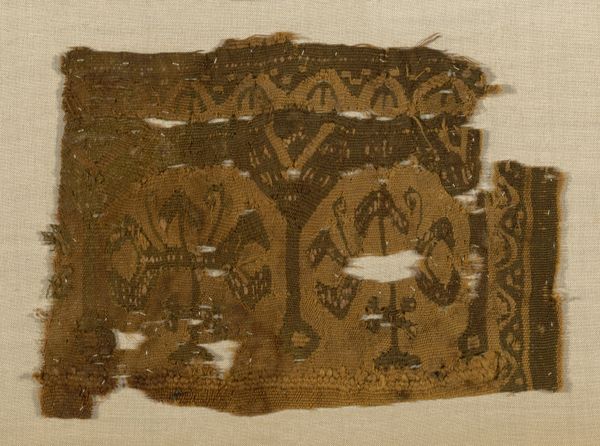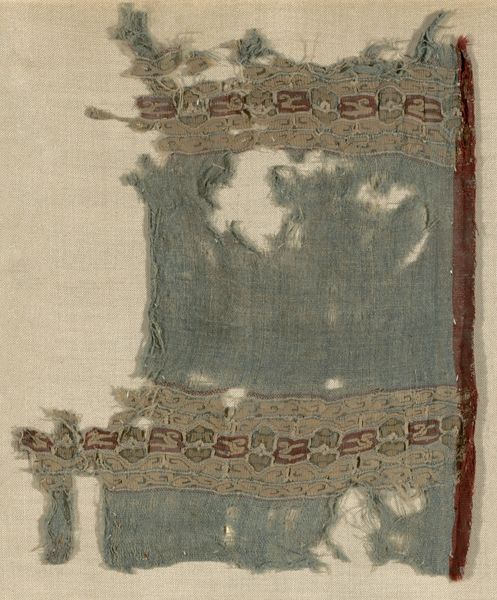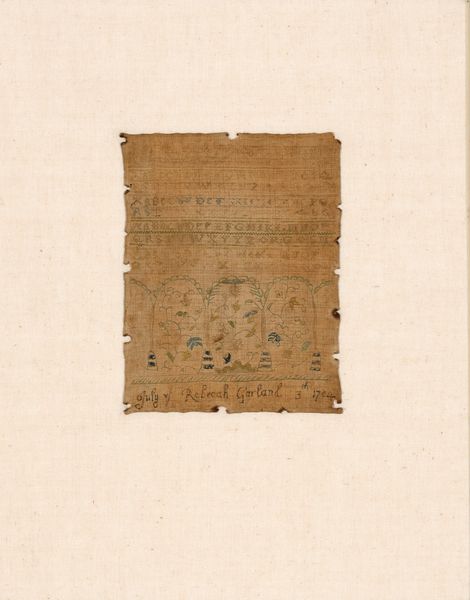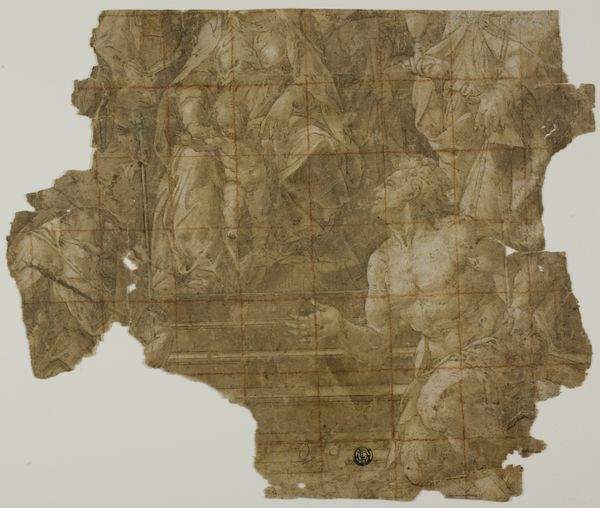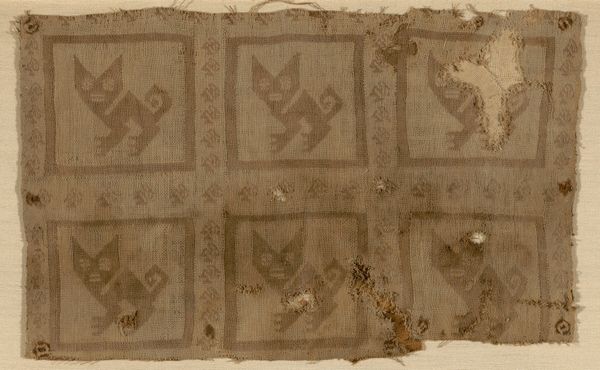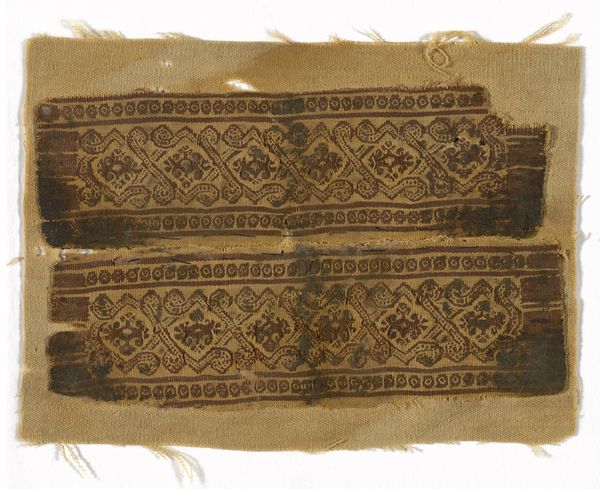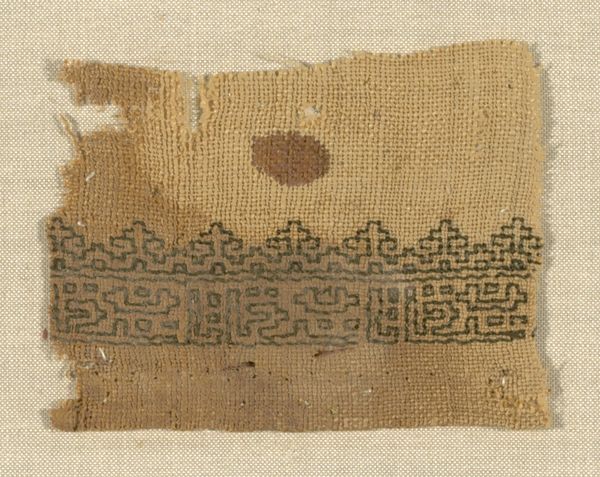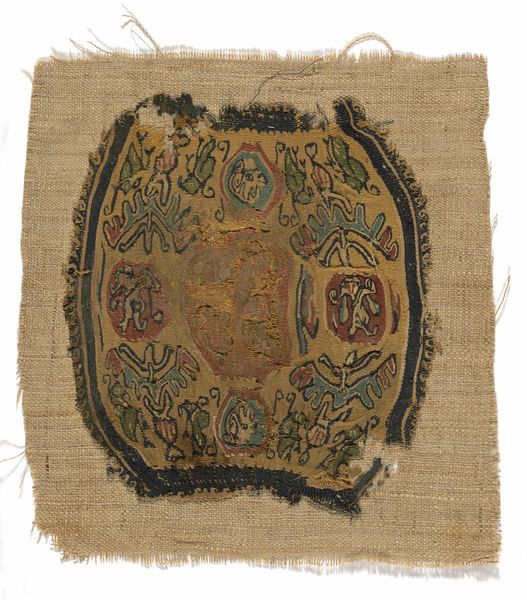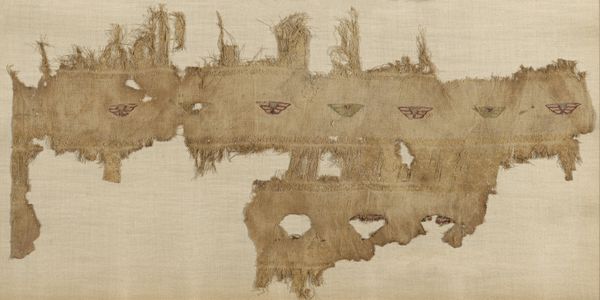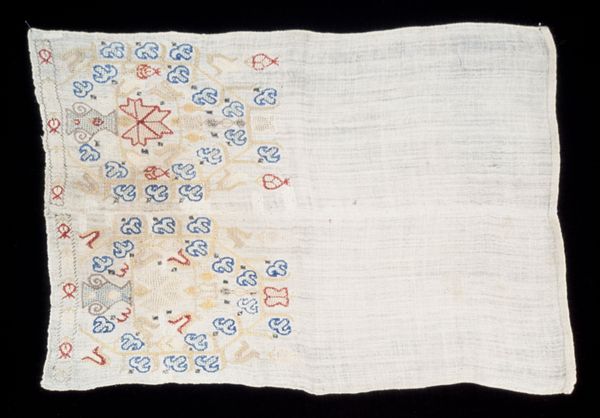
Fragment (Tunic) Roman period (30 B.C.– 641 A.D.), 5th/6th century
0:00
0:00
weaving, textile
#
weaving
#
textile
#
ancient-egyptian-art
#
figuration
#
egypt
#
ancient-mediterranean
Dimensions: 30.5 × 19.1 cm (12 × 7 1/2 in.)
Copyright: Public Domain
This linen fragment of a tunic was made in Egypt, sometime in the early centuries of the Common Era, by a Coptic weaver. Coptic is the term for Egyptian Christians, who developed a distinctive culture under Roman rule. The tunic fragment displays imagery that draws on both Egyptian and Greco-Roman sources: you can see decorative motifs featuring stylized animals and geometric patterns, woven in a deep red dye. These designs speak to the cultural mixing characteristic of the Coptic period, when traditional Egyptian artistic styles blended with those of the Mediterranean world. Such textiles, like other forms of early Christian art, served a public function, communicating religious and cultural identity in a visual language accessible to a diverse population. Studying textiles like this helps us understand the social and economic conditions of early Christian Egypt. We can learn about trade routes, textile production techniques, and the artistic patronage of the church. By examining the materials, techniques, and designs, historians gain insight into the complex cultural landscape of the period.
Comments
No comments
Be the first to comment and join the conversation on the ultimate creative platform.

